Trees Birds Mammals Fish Amphibians Reptiles
Wild Algarve
Bookshop
Polyporus ciliatus Fr. - Fringed Polypore
Phylum: Basidiomycota - Class: Agaricomycetes - Order: Polyporales - Family: Polyporaceae
Distribution - Taxonomic History - Etymology - Identification - Culinary Notes - Reference Sources
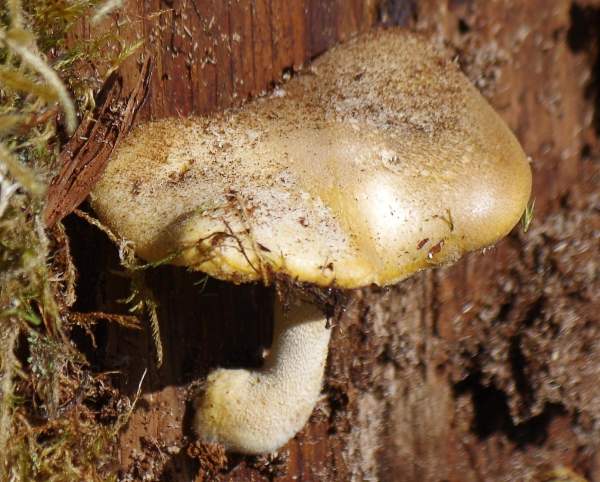
Polyporus ciliatus is a polypore that grows
on fallen branches of deciduous trees. The pores of these thin-capped
polypores cannot be detached from the upper layer of the cap. Tough and inedible, these and most other Polyporus species are not fungi to gather as food; however, the dried caps are sometimes used as table decorations or as inert contributors to pot pouri.
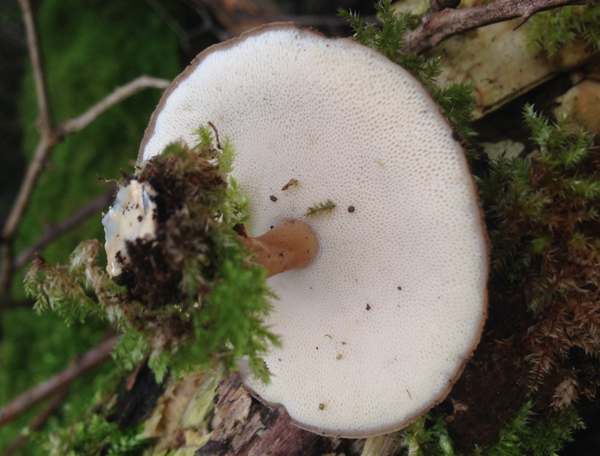
Distribution
Polyporus ciliatus is fairly common and widespread across most of Britain and Ireland. It occurs also throughout mainland Europe and in many parts of Asia and North America.
Well camouflaged among the fallen leaves, the pale brownish
caps can be difficult to spot when growing on fallen branches, but on standing timber they are rather more conspicuous.
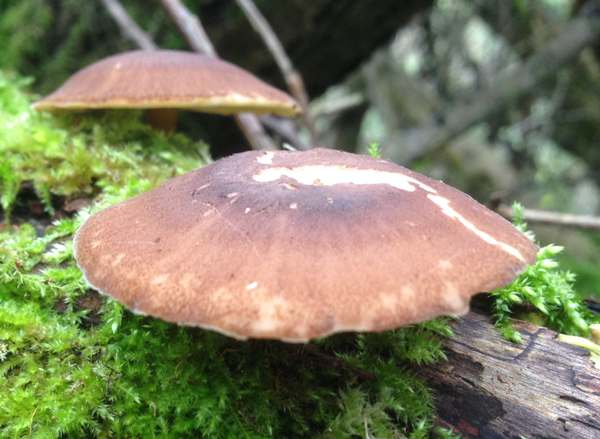
Taxonomic history
The Fringed Polypore was described scientifically in 1815 by the great Swedish mycologist Elias Magnus Fries.
Synonyms of Polyporus ciliatus include Boletus substrictus Bolton, and Polyporus lepideus Fr.
Etymology
The generic name Polyporus means 'having many pores', and fungi in this genus do indeed have tubes terminating in pores (usually very small and a lot of them) rather than gills or any other kind of hymenial surface.
The specific epithet ciliatus means 'with fine hairs' and is a reference to the fine bristly hairs on the cap surface, most noticeably near the margin.
Identification guide
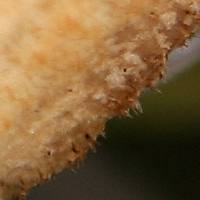 |
Cap
Convex at first, flattening with a depressed (umbilicate) centre, the upper surface of the 1.5-12cm diameter cap is very variable in
colour but usually some shade of grey-brown or yellowish-brown. Particularly towards the margin, the cap surface is usually covered in tiny bristly hairs; cap thickness is also very variable and ranges between 1 and 5mm. The flesh is white and leathery.
|
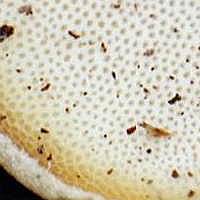 |
Stem
Colour variable but often pale yellowish brown or tawny-buff, 2-4cm long and 2-7mm in diameter, usually connected centrally to the cap, stems are often curved and slightly thickened at the base.
Tubes and pores
Beneath the cap, the white tubes are packed together at a
density of 4-6 per mm; they are between 0.5 and 2mm deep and terminate
in whitish pores that turn yellowish from the margin inwards and eventually light tan as they age. |
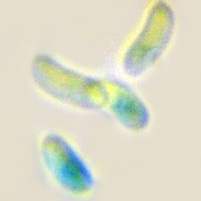 |
Spores
Subcylindrical, often slightly allantoid, smooth, 5-6 x 1.5-2.5µm; inamyloid.
Spore print
White. |
Odour/taste |
Odour faintly mushroomy; taste not distinctive. |
Habitat & Ecological role |
Saprobic, on dead deciduous hardwood - usually fallen
branches - notably Beech and various oaks but also (as in the main picture on this page) alders. |
Season |
Annual fruitbodies appear in late spring and summer, sometimes persisting through winter and into the following spring. |
Similar species |
Polyporus brumalis is similar but has a smooth margin and larger pores. |
Culinary Notes
The Fringed Polypore fungus is too tough and insubstantial to be of any culinary interest.
Reference Sources
Mattheck, C., and Weber, K. (2003). Manual of Wood Decays in Trees. Arboricultural Association
Pat O'Reilly (2016). Fascinated by Fungi, First Nature Publishing
BMS List of English Names for Fungi
Paul M. Kirk, Paul F. Cannon, David W. Minter and J. A. Stalpers. (2008). Dictionary of the Fungi; CABI.
Taxonomic history and synonym information on these pages is drawn from many sources but in particular from the British Mycological Society's GB Checklist of Fungi.
Acknowledgements
This page includes pictures kindly contributed by Simon Harding and Arnor Gullanger
Top of page...
Fascinated by Fungi. Back by popular demand, Pat O'Reilly's best-selling 450-page hardback book is available now. The latest second edition was republished with a sparkling new cover design in September 2022 by Coch-y-Bonddu Books. Full details and copies are available from the publisher's online bookshop...